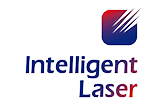In today's rapidly advancing technology landscape, laser tracking sensors have emerged as an indispensable tool for a wide range of industries and applications. These sophisticated sensors utilize laser technology to precisely track and monitor the movement of objects in real-time, providing accurate data and insights that were previously unattainable. In this blog, we will delve into the key features of laser tracking sensors and explore how they are revolutionizing various fields.
Precision Tracking
One of the standout features of laser tracking sensors is their unparalleled precision and accuracy. By emitting laser beams and capturing the reflection off surfaces, these sensors can track the exact position and movement of objects with incredible detail. This level of precision is crucial in applications where even the slightest deviation can have significant consequences, such as in industrial automation, robotics, and 3D scanning.
Multi-axis Capability
Laser tracking sensors are designed to track movement in multiple axes, making them ideal for applications that require tracking in 3D space. Whether it's monitoring the movement of a robotic arm or tracking the motion of a complex assembly line, these sensors can capture data in multiple dimensions simultaneously. This multi-axis capability enables engineers and researchers to analyze complex movements and make informed decisions based on real-time data.
Speed and Efficiency
Another key feature of laser tracking sensors is their high speed and efficiency. These sensors can track moving objects at incredibly fast speeds, making them suitable for dynamic applications where quick and precise measurements are essential. Whether it's tracking the movement of objects on a conveyor belt or monitoring the position of a high-speed vehicle, laser tracking sensors can provide real-time data without compromising on accuracy or reliability.
Versatility and Adaptability
Laser tracking sensors are highly versatile and adaptable, making them suitable for a wide range of applications across various industries. From automotive manufacturing and aerospace engineering to healthcare and entertainment, these sensors can be customized and optimized to meet the specific needs of different applications. Whether it's tracking the movement of surgical instruments in a hospital operating room or monitoring the performance of a high-performance sports car, laser tracking sensors can deliver precise and actionable data in real-time.
In conclusion, laser tracking sensors are revolutionizing the way we track and monitor movement in a wide range of applications. With their precision tracking, multi-axis capability, speed, efficiency, versatility, and adaptability, these sensors are empowering engineers, researchers, and innovators to push the boundaries of what is possible. As technology continues to evolve, laser tracking sensors will play a crucial role in shaping the future of industries and propelling innovation to new heights.
